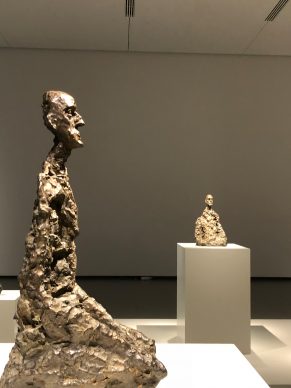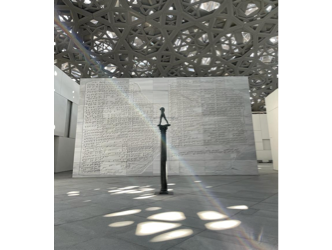Death’s triumph
In what is known as classical art, painters and sculptors used to amuse themselves by creating vanitas works: dead game lying on a table, flowers or fruit from different seasons arranged within the same composition, a skull or even a skeleton… These were meant to evoke death’s triumph over all human activity.
Forever
This idea can also be extended to other representations. Depicting a monarch on horseback, modelled in stone or metal for eternity (omitting the revolutions), reveals the desire that he should remain in people’s memories even once he’s dead and gone, or soon to be.
Star sculptor
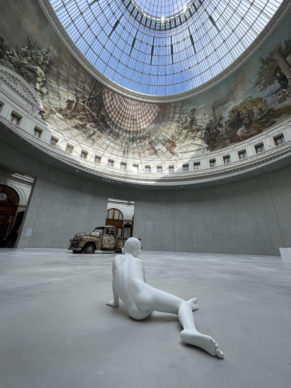
The American artist Charles Ray (born in 1953) has taken up this great tradition, revisiting it along with his own obsessions, in the light of art history. While he is not so well known in France, he is one of the star sculptors of our time.
Met, Pompidou, Pinault collection
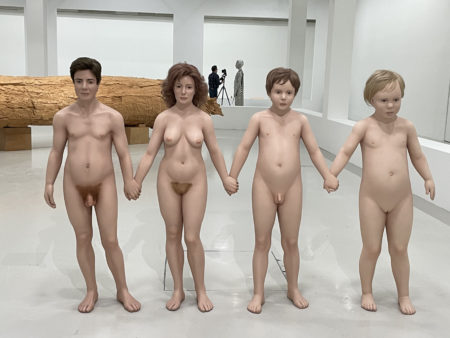
By chance and due to the public health crisis he is currently the subject of a large-scale exhibition at the Metropolitan Museum in New York at the same time as at two sites in Paris, which have been exceptionally well coordinated, at the Centre Pompidou and the Pinault collection at the Bourse de Commerce.
French retrospective
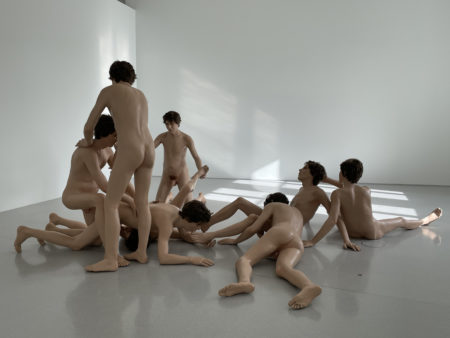
This is a French retrospective in two phases, featuring around forty artworks in total, to mark his first display on this side of the Atlantic. All three exhibitions follow the same principle: they feature pared-back settings that give his work a majestic quality. The open space at the Centre Pompidou in Paris, which he has entirely redesigned on the 6th floor of the building, seems best adapted to this exercise.
Jean -Pierre Criqui
Here the curator, Jean-Pierre Criqui, offers his interpretation of Charles Ray’s work: “It’s a reflection on what constitutes sculpture.”Jean-Pierre Criqui responded to my questions without wanting to be filmed. During his answers I filmed the Charles Ray piece at the Centre Pompidou entitled “Family Romance”. YouTube considers the image to be unsuitable for viewers under the age of 18. You need to click on ” Regarder su Youtube” to access to it.
Inanimate objects

The visitor’s first feeling is clear in the midst of this group of inanimate objects: death hangs over everything and takes the form of references to art history. We are first greeted by the fibreglass moulding, painted light grey, of a car that’s been in a crash.
Andy Warhol’s car accidents
Just looking at the Pontiac replica crumpled up like an accordion is enough to make you think that its driver must have had a terrible quarter of an hour. Ray in fact chose a vehicle whose driver didn’t survive. But the artwork is also evocative of the silkscreen car accidents from Andy Warhol’s famous “Disaster Paintings” series. These 21st-century vanitas works take on distinctly urban forms…
Homeless and rich materials
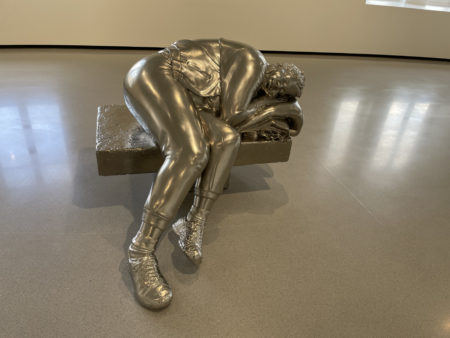
Charles Ray has developed an entire array of figures which he reproduces at various scales according to what he wants them to say. The more important these characters are, the more ordinary the materials in which they appear. The homeless or the drug addicts who he observes in the city where he lives, Los Angeles, are depicted in rich materials, marble or very heavy polished aluminium.
Caroline Bourgeois
Caroline Bourgeois, curator at the Pinault collection, explains that the artist often finds inspiration while out on his night-time walks, later arranging his subjects in poses. Certain details in the depiction of these figures on the fringes of society seem to evoke Van Gogh’s “Potato Eaters”, or the painting of his own well-worn shoes.
Himself
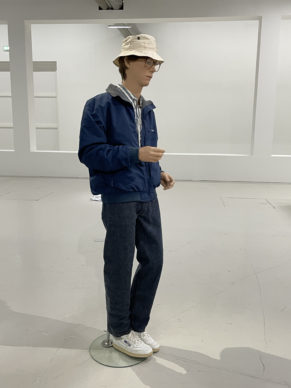
But when Ray depicted himself in 1990, for example, he used a modest and fairly crude material: employing the technique of fabricating shop window mannequins. There’s nothing simple about this artist.
Under the effect of LSD
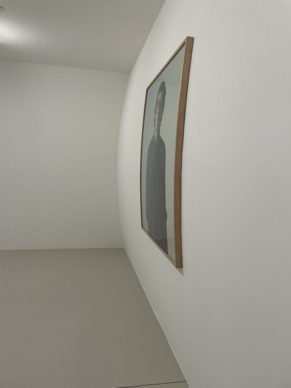
An entire room at the Pompidou is set aside to feature a self-portrait of the artist, made while under the effects of LSD. Observing the image in profile, it is convex, hanging on a convex wall. The hallucinogenic effect goes so far as to impact the visitor.
Whistler

For some time now the sculptor has been working using a new material: paper. He makes Japanese paper in his studio, which he then turns into sculptures. But he refers to these as drawings. In “Portrait of the Artist’s Mother” (which takes its title from one of the most famous works by the impressionist painter Whistler, exhibited at the Musée d’Orsay) he has modelled the silhouette of a nude woman using this lightweight material invoking pleasing forms and a suggestive stance, and covered in multicoloured flowers. It measures 3 metres in length and weighs barely 9 kilos.
A Catholic ready-made
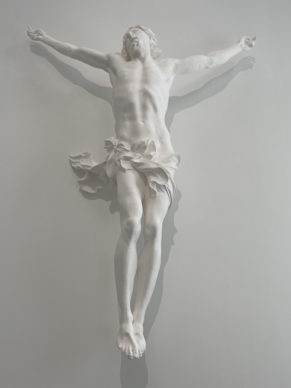
At the Pinault collection there’s also a figure of Christ made out of white paper, standing 3.5 metres tall without his cross. It’s a copy of a small-scale sculpture by Algardi, the Renaissance artist from Bologna, which he thus transforms into a Catholic-inspired “readymade”.
Navigating in the history of forms
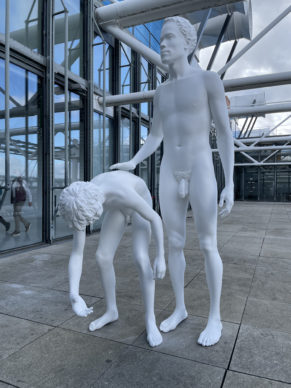
It’s in this way that Charles Ray navigates the history of forms, creating new ones and playing with the effects of material and scale, in a spirit that is simultaneously erudite, mischievous, and meticulous.

Until 6 juin. Collection Pinault.www.pinaultcollection.com/Until 20 juin, Centre Pompidou.www.centrepompidou.fr/
Support independent news on art.
Your contribution : Make a monthly commitment to support JB Reports or a one off contribution as and when you feel like it. Choose the option that suits you best.
Need to cancel a recurring donation? Please go here.
The donation is considered to be a subscription for a fee set by the donor and for a duration also set by the donor.

